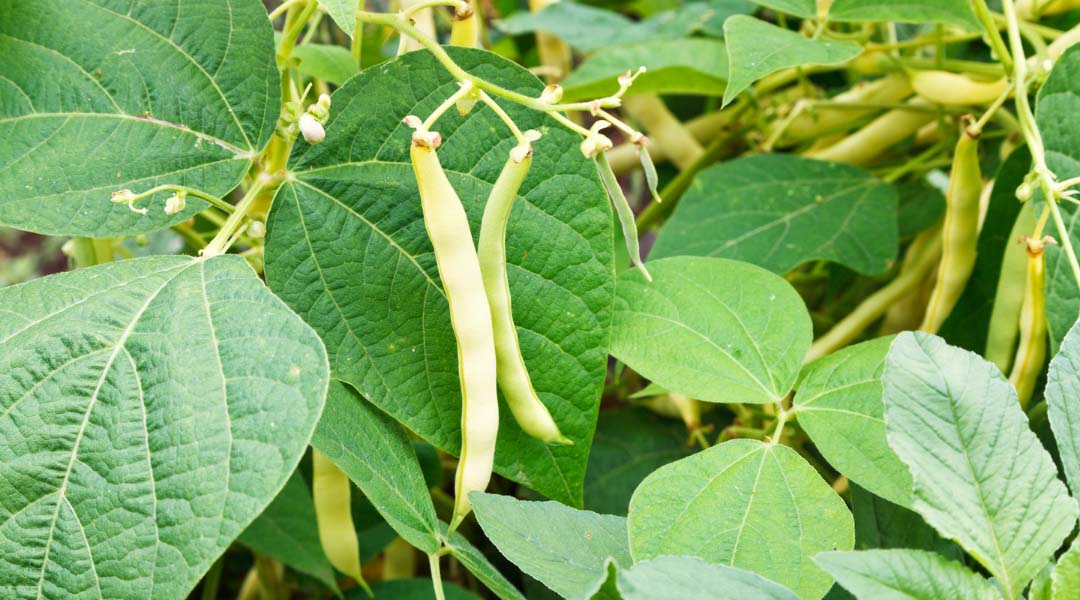Growing beans is a rewarding endeavor for both novice and experienced gardeners. Beans are not only nutritious and versatile in the kitchen, but they also offer significant benefits to your garden’s soil by fixing nitrogen, which enriches the earth for future crops. Whether you’re growing beans in a small backyard plot or a larger garden, this guide will walk you through everything you need to know to grow beans successfully.
Importance of Growing Beans
Beans are a staple in many diets worldwide, known for their rich nutritional profile, including high levels of protein, fiber, vitamins, and minerals. In addition to their health benefits, beans are one of the easiest vegetables to grow, making them a popular choice for home gardeners. They are adaptable to various climates, and with the right care, they can provide a bountiful harvest throughout the growing season.
Benefits of Growing Beans
One of the primary benefits of growing beans is their ability to fix nitrogen in the soil. Unlike many other plants, beans have a symbiotic relationship with bacteria in their roots that convert atmospheric nitrogen into a form that plants can use. This process naturally enriches the soil, reducing the need for chemical fertilizers and preparing the ground for future crops. Additionally, beans are space-efficient and can be grown in small gardens, raised beds, or even containers, making them accessible to virtually anyone interested in gardening.
Purpose of the Guide
This guide aims to provide a comprehensive overview of how to grow beans, from selecting the right variety to harvesting and troubleshooting common issues. Whether you are a beginner or have some gardening experience, these tips will help you achieve a successful bean crop.
Understanding Bean Types
Beans come in various types, each with its characteristics. The two main categories are bush beans and pole beans. Bush beans are compact plants that grow about 1 to 2 feet tall and do not require support. They are ideal for small spaces and produce a quick, early harvest. Pole beans, on the other hand, are climbing plants that need a trellis or poles to support their vertical growth. They typically yield more beans over a more extended period than bush beans. Runner beans, a less common type, are often grown for their ornamental flowers as well as their edible pods.
Factors to Consider When Selecting Varieties
When choosing a bean variety, consider your local climate, the length of your growing season, and the space available in your garden. For instance, bush beans are well-suited for cooler climates and shorter growing seasons, while pole beans thrive in warmer conditions and can produce beans throughout the summer. If space is limited, bush beans or compact pole bean varieties may be the best option. Additionally, think about how you plan to use the beans—whether you want to eat them fresh, freeze them, or dry them for storage.
Recommended Varieties
Some popular and reliable bean varieties include:
Bush Beans: ‘Blue Lake,’ ‘Contender,’ and ‘Royal Burgundy.’
Pole Beans: ‘Kentucky Wonder,’ ‘Scarlet Runner,’ and ‘Blue Lake Pole.’
Runner Beans: ‘Scarlet Emperor’ and ‘Painted Lady.’
These varieties are known for their productivity, disease resistance, and excellent flavor, making them great choices for home gardeners.
Preparing the Soil for Bean Planting
Soil Requirements
Beans thrive in well-drained soil with a pH level between 6.0 and 7.0. The soil should be rich in organic matter but not overly fertile, as too much nitrogen can lead to excessive leaf growth at the expense of bean production. Beans prefer a slightly acidic to neutral soil, so it’s essential to test your soil’s pH and make adjustments if necessary.
Soil Preparation Steps
Start by testing your soil’s pH level. If the soil is too acidic, add lime to raise the pH. If it’s too alkaline, you can lower the pH by adding sulfur or organic matter like compost. To improve soil structure and drainage, work compost or well-rotted manure into the soil. Beans do not like heavy, waterlogged soils, so if your garden has poor drainage, consider planting beans in raised beds or mounds.
Creating Rows or Mounds for Planting
Create rows or mounds in your garden for planting. Rows should be spaced about 18 to 24 inches apart for bush beans and 3 to 4 feet apart for pole beans. Mounding is particularly beneficial for areas with poor drainage. Each mound should be about 8 inches high and 18 inches wide, with beans planted on top to ensure good drainage and root aeration.
Planting Beans
Timing the Planting
Beans are warm-season crops that should be planted after the last frost when the soil temperature reaches at least 60°F. Planting too early in cold soil can lead to poor germination and seed rot. In most regions, this means planting beans in late spring. If you live in a cooler climate, you can warm the soil by covering it with black plastic a few weeks before planting.
Planting Methods
Beans are typically direct-seeded into the garden because they do not transplant well. Plant seeds about 1 to 2 inches deep and 2 to 4 inches apart for bush beans. For pole beans, space seeds 3 to 4 inches apart, and place a support structure, such as a trellis or poles, in the ground before planting. If you’re short on time or space, you can start seeds indoors a few weeks before the last frost and transplant the seedlings, but be very gentle to avoid disturbing their roots.
Succession Planting
To ensure a continuous harvest, practice succession planting. Sow a new batch of seeds every two to three weeks until midsummer. This approach allows you to enjoy fresh beans over an extended period and can help reduce the impact of pests and diseases that may affect a single planting.
Caring for Bean Plants
Watering
Beans require consistent moisture, especially during flowering and pod development. Water the plants deeply once a week, ensuring that the soil is moist but not waterlogged. Avoid overhead watering to reduce the risk of fungal diseases. Instead, use soaker hoses or drip irrigation to deliver water directly to the soil, keeping the foliage dry.
Mulching
Mulching helps retain soil moisture, suppress weeds, and regulate soil temperature. Apply a 2- to 3-inch layer of organic mulch, such as straw, compost, or shredded leaves, around the base of the plants. Mulch also helps protect shallow bean roots from temperature fluctuations and reduces the need for frequent watering.
Fertilizing
Beans are light feeders, so they don’t require heavy fertilization. If your soil is rich in organic matter, additional fertilization may not be necessary. However, if you notice slow growth or pale leaves, you can side-dress with a balanced fertilizer or compost. Be cautious with nitrogen-rich fertilizers, as beans can produce their own nitrogen and too much can lead to lush foliage with fewer beans.
Supporting Climbing Beans
For pole beans and runner beans, providing proper support is crucial. Set up trellises, poles, or a teepee structure before planting to avoid disturbing the roots later. As the vines grow, gently guide them towards the support, and they will naturally start to climb. Regularly check that the plants are securely attached to the support to prevent them from toppling over in wind or rain.
Pest and Disease Management
Beans are susceptible to pests such as aphids, bean beetles, and cutworms. Regularly inspect your plants for signs of infestation, such as holes in leaves or clusters of insects. You can control pests by using insecticidal soap, neem oil, or introducing beneficial insects like ladybugs. Common diseases include rust, powdery mildew, and root rot, which can be mitigated by proper spacing, avoiding overhead watering, and rotating crops each year.
Harvesting Beans
When to Harvest
The time to harvest beans depends on the variety and your intended use. For fresh beans, pick them when the pods are firm and crisp, usually when they are about 4 to 6 inches long. Beans that will be dried for storage should be left on the plant until the pods are fully mature and dry.
How to Harvest
When harvesting fresh beans, use two hands to avoid damaging the plant—one hand to hold the stem and the other to gently pull the bean. Regular harvesting encourages the plant to produce more beans. For dried beans, wait until the pods are brown and dry, then pull up the entire plant and hang it upside down in a dry, well-ventilated area to finish drying.
Post-Harvest Handling
After harvesting, fresh beans should be washed and stored in the refrigerator, where they can last for up to a week. Dried beans should be shelled and stored in airtight containers in a cool, dark place, where they can last for several months or even years. Beans can also be preserved by freezing or canning, depending on your preference.
Common Problems and Solutions
Troubleshooting Growth Issues
- Poor Germination: This could be due to planting in cold, wet soil. Ensure soil temperature is at least 60°F before planting.
- Yellowing Leaves: Often a sign of nutrient deficiency or overwatering. Test the soil and adjust watering practices accordingly.
- Leggy Plants: Usually caused by insufficient light or overcrowding. Thin plants and ensure they receive at least 6 hours of sunlight daily.
Addressing Environmental Challenges
- Drought: Mulch heavily and water deeply but less frequently to encourage deep root growth.
- Excessive Rain: Improve soil drainage and consider planting in raised beds.
- Unexpected Frosts: Use row covers or cloches to protect plants from late or early frosts.
Companion Planting and Crop Rotation
Benefits of Companion Planting
Beans benefit from companion planting, which involves growing certain plants together for mutual benefit. Beans grow well alongside corn, which provides natural support for climbing beans. Other good companions include squash, which shades the soil, keeping it cool and moist, and marigolds, which deter pests. Avoid planting beans near onions, garlic, or fennel, as these can inhibit their growth.
Crop Rotation for Bean Health
Rotating your bean crops is crucial to prevent soil depletion and reduce the buildup of pests and diseases. Avoid planting beans in the same spot year after year. Instead, follow beans with crops that benefit from the nitrogen beans leave in the soil, such as leafy greens or root vegetables. A simple crop rotation plan can help maintain soil health and improve overall garden productivity.
Conclusion
Growing beans is a straightforward and rewarding gardening activity that offers numerous benefits, from enhancing your garden’s soil to providing nutritious food for your table. By choosing the right variety, preparing the soil, planting at the right time, and caring for your plants properly, you can enjoy a bountiful harvest of beans.
Whether you’re a seasoned gardener or just starting, beans are a fantastic crop to grow. They are relatively low-maintenance, adaptable to various climates, and provide continuous yields throughout the growing season. Don’t be afraid to start small—try a few varieties and see which ones thrive in your garden.
Additional Resources
For those looking to expand their gardening knowledge, consider joining a local gardening club or online forum where you can share tips and experiences with fellow gardeners. Books like The Vegetable Gardener’s Bible by Edward C. Smith and Rodale’s Ultimate Encyclopedia of Organic Gardening are also excellent resources for in-depth information on growing beans and other garden crops.
By following this comprehensive guide, you’ll be well on your way to growing healthy, productive bean plants that will provide delicious produce for your kitchen and enrich your garden for years to come.


0 Comments